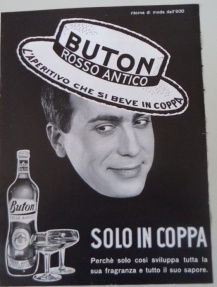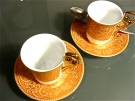Creamed salt cod is one of those dishes that can take me somewhere else.
Known as ‘baccalà mantecato’ in Italian, it’s a specialty of Venice and although complex in flavour, uses minimal ingredients: salt cod, garlic, olive oil, salt and pepper and (sometimes) milk. The success lies in adding olive oil slowly as if making mayonnaise while beating the hell out of the cooked fish. A codswallop of sorts.
A recent look through my shoebox of vintage family photos transported me back to a mid 1960s’ shipboard romance.
A family trip back to Italy by boat promised all the fun a gal could dream of if the brochures were to be believed. However, as a kid, my dating prospects were limited so I settled for a relationship with a reconstituted fish.
I was an adventurous eater and looked forward to the daily buffets aboard the Marconi, looking for favourite dishes among butter sculptures guaranteed to make Michelangelo weep. Dinners were dressy affairs and waiters served antipasto selections at our dining tables from oversized stainless steel trays.

I switched between salami, mortadella and prosciutto, but the one constant was creamed salt cod. From Sydney to Genoa – over 23 days and 10 ports of call in southeast Asia, the middle East and finally Italy – I ate creamed salt cod. I then took a break for a few years, but every time I was downwind of it, our sea voyages came to mind.
The liners SS Guglielmo Marconi and SS Galileo Galilei were purpose-built in 1962 in my hometown Trieste to bring immigrants to Australia. The sister ships were furnished with elegant interiors and collected awards for their innovative design. Shipboard games were simple and included shuffleboard, quoits and horse races with 2-D timber animals that moved along a track on the throw of the dice. Crossing the equator was a big poolside occasion featuring egg and flour initiations of Equator-crossing virgins and wily old King Neptune looking on. Children were encouraged to learn folkdances of the countries visited during stopovers. Our teacher, a heavily accented Eastern European woman, drummed into us an Indian dance routine, because “tomorrow is Bombatom”. I asked my parents if Bombay was a war zone.
Not that I realised it at the time, but what better way is there than enjoying salt cod on a ship, celebrating the important trade of Basque fishermen 500 years ago.
The award-winning Cod: a Biography of the Fish that Changed the World (Mark Kurlansky, 1999) is next in line on my bedside table.
This baccalà mantecato recipe by Emiko Davies is great … try it with polenta or eat it as I did on the ship – on nice toasted bread. Piled high.
Image from ‘The Sea Herald’ – Marconi 1965


































